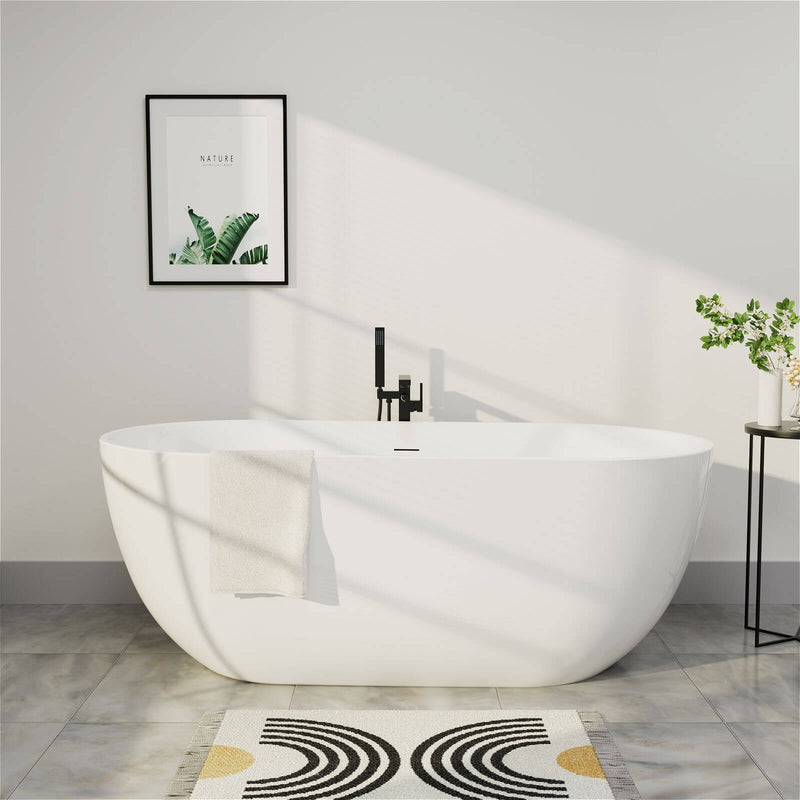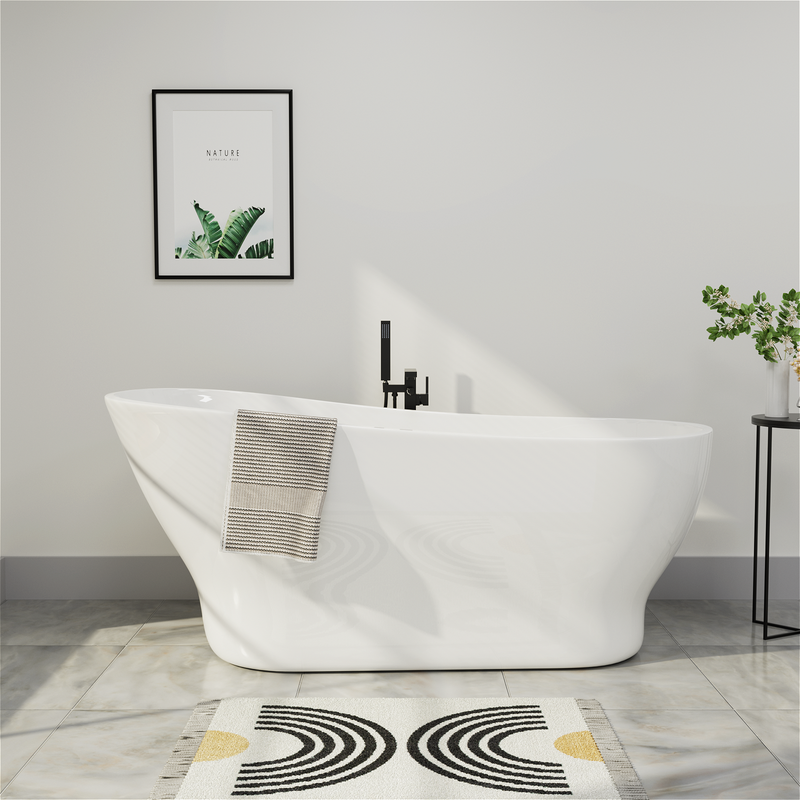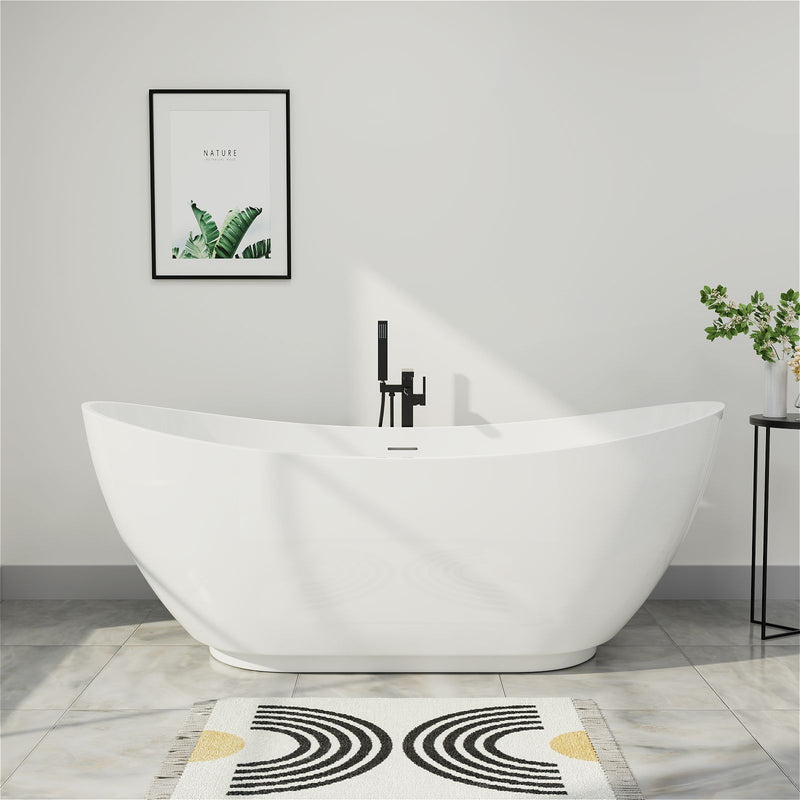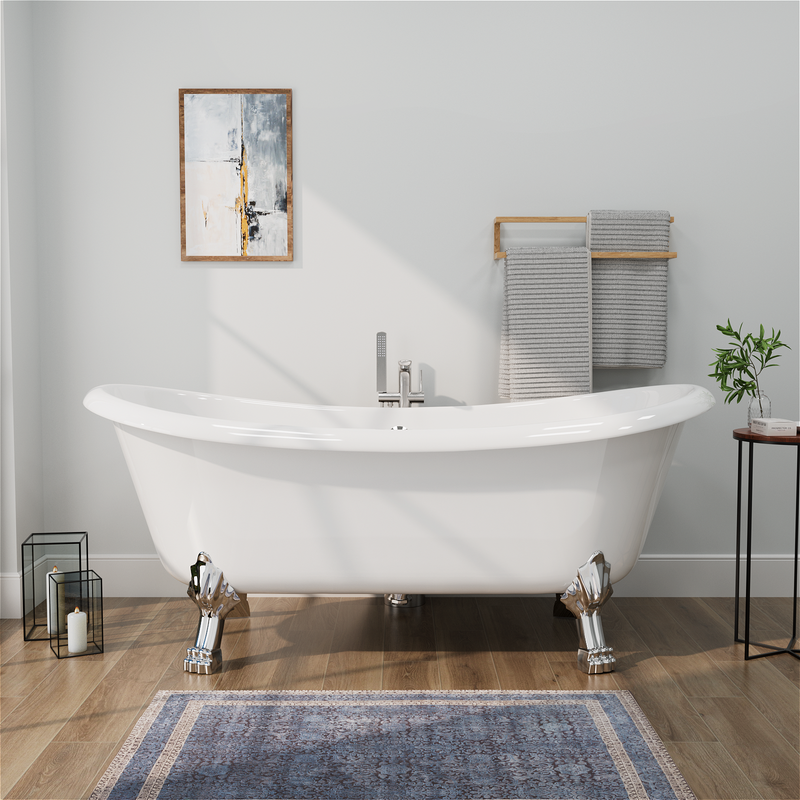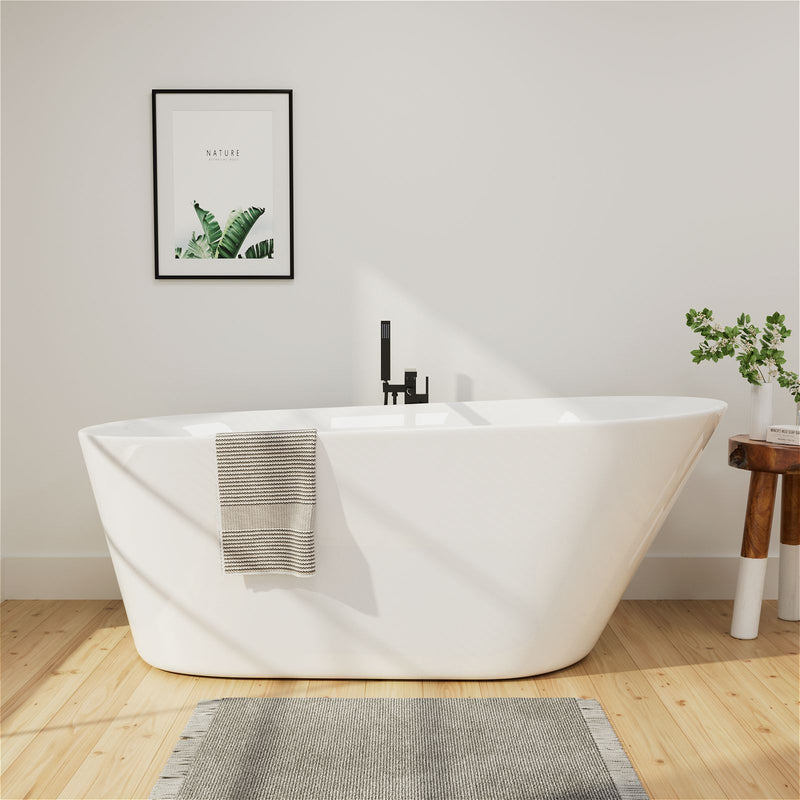In small bathrooms, every inch of space counts. For many homeowners, the dream of having a bathtub is tempered by tight layouts, plumbing constraints, and the fear that a tub will overwhelm the room. Yet, a Japanese soaking tub—traditionally known as an ofuro—offers a remarkable solution. Its unique design emphasizes depth over length, allowing you to fully immerse your body while occupying far less horizontal space.
At Mokleba, we've reimagined this classic form in modern acrylic, bringing you compact luxury without compromise. In this article, you'll discover why Japanese soaking tubs are ideal for small bathrooms, how to choose the right one, installation tips, and common questions answered.
Why a Japanese Soaking Tub Works in a Small Bathroom
Deep Vertical Design
Unlike standard Western-style tubs, which favor length, Japanese soaking tubs focus on depth. Many models reach water depths of 20–24 inches or more, allowing you to sit upright and submerge most of your body. This deep immersion gives the feeling of a full bath without needing a long tub footprint.
Because the width and length can remain modest, you gain maximum soak with minimal space taken. Some deeper models require less water overall because of their compact horizontal dimensions.
Space Efficiency
Japanese soaking tubs are designed to deliver immersion within a smaller cavity. Because you don't lie flat but sit upright, the horizontal footprint is reduced. This makes them an especially good choice for tight bathrooms, en suites, lofts, or apartments.

Their efficiency also means less floor area is wasted, leaving more space for vanities, showers, or clearance paths.
Thermal Efficiency & Water Conservation
Because these tubs emphasize depth rather than surface area, the exposed water surface is smaller, meaning less heat loss. This allows the water to stay warmer longer, reducing the need for reheating.
Furthermore, deep-but-compact tubs often require less total water to fill than longer, shallow tubs. That means savings in both water and heating energy.
Choosing the Right Japanese Soaking Tub for a Small Bathroom
Dimension Planning
Begin by measuring the available footprint: length, width, and ceiling height above potential tub placement. Ensure there is clear access for installation and entry. Leave additional buffer space (typically 3–4 inches) around the tub edges for cleaning and plumbing connections.
Look for models with dimensions tailored for tight areas—for example, square or near-square tubs (e.g., 47"×27") or compact circular designs.
Be mindful of height: some tubs are quite tall to support depth. You'll need to ensure you can step over the rim comfortably and that the tub fits within the vertical constraints of the bathroom. In some designs, a built-in seat reduces the height needed for immersion.
Depth and Seat Design
Depth is critical. Many Japanese tubs aim for 20+ inches of water depth (to overflow the water line). Some models add built-in seats so you can both sit and soak fully.
You'll want to check interior depth (to overflow drain) rather than just exterior height. Some users note that tubs branded as Japanese soaking may have shallow depths (14–15 inches), which undercut the immersion experience.
Material Selection & Insulation
Mokleba's modern Japanese soaking tubs use acrylic-reinforced designs that provide durability, lightweight installation, and ease of maintenance. Acrylic is a common, effective choice alongside traditional wood or stone.
To enhance heat retention, some tubs include insulation layers or foam cores. Even without that, acrylic's lower heat transfer coefficient helps maintain warmth. Some manufacturers of deep tubs highlight the fact that deep immersion tubs cool more slowly due to reduced surface-to-volume ratio.
Drainage, Overflow, & Plumbing
Check the drain and overflow locations—center drains are common and may simplify plumbing. Confirm that your existing plumbing can handle the tub's water volume. For instance, if you have a tank-style hot water heater, a deep soak might draw a large portion of your hot water supply at once. Some users report that a Japanese tub can exhaust the household hot water tank.
Ensure your drain and waste lines are adequately sized to empty a high-capacity tub rapidly. Also consider adding a hand shower attachment for rinsing while seated. In tight bathrooms, plumbing flexibility is vital.
Weight & Structural Support
While acrylic tubs are lighter than cast iron or stone, a fully filled deep soaking tub still carries significant weight (water + tub structure). Verify floor joist strength and load-bearing capacity in your bathroom. Reinforcements may be necessary in older or upper-floor installations.
Also, consider how the tub will be brought into position—some bathrooms require the tub to be carried through tight doorways or up stairwells. Some users have had to redesign their doorways to accommodate tall soaking tubs.
Benefits You Can Expect
Enhanced Relaxation & Health
Deep immersion in warm water supports muscle relaxation, improves circulation, and helps relieve tension or joint stiffness. Wellness experts praise Japanese soaking tubs for their therapeutic bath experience.

A review of Japanese-style bathing describes additional benefits like improved sleep and stress relief—though care must be taken for older users in colder conditions.
Stress Relief & Mental Reset
The act of soaking upright in deep water encourages mindfulness and deliberate pause. Many users find the ritual lends itself to a mental break from daily pressures.
Efficient Use of Space & Resources
As discussed, you get therapeutic immersion without needing a long tub. You consume less water, use less heated water, and reduce the cooling loss, making the tub an efficient solution for small bathrooms.
Design Appeal
A well-chosen Japanese soaking tub becomes a visual anchor in your bathroom, combining functionality with aesthetics. Its minimalist lines make it easy to pair with modern bathroom fixtures. Because you don't need a long apron-style tub, you free floor space for vanities, storage, or sleek open layouts.
Installation & Use Tips for Small Spaces
Layout Planning
Use precise measurements and create a floor plan showing clearance paths. Mark the tub's footprint on the floor to check door swing, access to plumbing, and walking space. If possible, place the tub against a wall or corner to maximize open area.
Ventilation & Humidity Control
Deep soaking tubs generate warm, moist air. Good ventilation is essential to prevent mold or condensation issues. A quality exhaust fan and periodic airing of the room help maintain air quality.
Filling & Heating
Because of the deeper design, the initial water fill may take longer or demand more hot water. If your heater or plumbing is undersized, consider staggering the fill or using a recirculation system. Some tubs support optional reheat or recirculation features in high-end models.
Entry & Exit Safety
Given higher rim heights, safe entry and exit are important. Consider installing a small step or grab bar, or using slip-resistant coatings. A hand shower attachment can assist rinsing without needing to stand at the rim.
Maintenance
Keep cleaning simple: mild, nonabrasive cleaners and soft cloths. Avoid harsh scrubbers that may scratch acrylic surfaces. Periodically rinse the seat or surfaces to prevent mineral buildup. Because of the compact design, interior surfaces are easier to reach.
Why Choose Mokleba for Your Japanese Soaking Tub
Tailored for compact spaces—Mokleba's Japanese-style models are engineered to deliver full immersion in smaller footplates, making them ideal for tight bathrooms.
Premium acrylic construction—combining durability, warmth retention, and ease of service.
Design-forward aesthetics—sleek lines, modern finishes, and compatibility with contemporary fixtures.
FAQs
Q: Can a Japanese soaking tub fit into a very small bathroom (e.g., 5' × 8')?
Yes. Because the design favors depth over length, many Japanese tubs can fit into narrow or compact layouts. With careful planning, you can place a Japanese soaking tub even in a 5' × 8' bathroom, provided you leave space for plumbing, door clearance, and safe access.
Q: What is the ideal depth for a Japanese soaking tub?
To achieve meaningful immersion, a water depth of 20–24 inches (to overflow level) is a good target. Some users opt for at least 18 inches to avoid too shallow soaking. Beware of models marketed as Japanese but offering only 14–15" depth—they often underdeliver the experience.
Q: Will frequent use of a Japanese soaking tub drain my hot water supply?
It depends on your water heater capacity. Deep immersion requires more hot water than shallow tubs. Some users report that their traditional tank-style systems were depleted after a full soak. A tankless or higher-capacity heater mitigates this issue.
Q: Are Japanese soaking tubs difficult to install?
Installation is more complex than standard tubs but not prohibitive. Key considerations include plumbing capacity, floor support, access, and drainage. For small bathrooms, having flexible plumbing and modular tub access will reduce complications.
Q: How do you enter and exit a deep soaking tub safely?
Because of deeper rims, many buyers use steps, grab bars, or textured slip-resistant interior surfaces. A hand shower helps rinse without needing to stand fully.
Q: How energy-efficient is a Japanese soaking tub?
Quite efficient, thanks to smaller surface area relative to volume. The reduced surface exposure lessens heat loss and lowers reheating needs. You also often use less water overall compared to long, shallow tubs.
Q: Can the water stay warm enough for long soaks?
Yes, in well-insulated or acrylic tubs, the water cools more slowly. Using a lid or cover between soaks helps retain heat. Some higher-end models support recirculation or heating systems.

